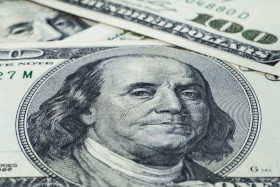The US dollar is slumping on Tuesday as the Federal Reserve announced an emergency cut to interest rates. With financial markets tanking and plenty of economic uncertainty surrounding the coronavirus, the central bank cut its benchmark rate by 50 basis points. Stocks fell after an initial bump, but the greenback was largely unaffected by the announcement.
With the adjustment, the fed funds rate will be in the target range of 1% and 1.25%. This comes after the Fed cut rates three times last year by 75 basis points.
The coronavirus is presenting âevolving risksâ to the US economy, the Fed said in a statement. In its first such move since the 2008 financial crisis, the Fed took action after many officials warned that Covid-19 was affecting the material impact on the economic outlook.
In light of these risks and in support of achieving its maximum employment and price stability goals, the Federal Open Market Committee decided today to lower the target range for the federal funds rate.
The magnitude and persistence of the overall effect on the US economy remain highly uncertain and the situation remains a fluid one. Against this background, the committee judged that the risks to the US outlook have changed materially. In response, we have eased the stance of monetary policy to provide some more support to the economy.
President Donald Trump lauded the news, but he tweeted that the Fed did not go far enough.
The Federal Reserve is cutting but must further ease and, most importantly, come into line with other countries/competitors. We are not playing on a level field. Not fair to USA. It is finally time for the Federal Reserve to LEAD. More easing and cutting!
Treasury Secretary Steven Mnuchin welcomed the move after he and other G7 officials confirmed they would act to prevent further economic harm. However, investors were not satisfied as they failed to reveal what tools they would use to limit the fallout of the outbreak. He later clarified that any stimulus package in response to the outbreak would involve infrastructure spending.
Some analysts say that traders will begin to price in a zero-interest-rate-policy (ZIRP) by the end of the year, especially if the effects of the virus are not contained by the summer. Additional easing could happen as early as this monthâs FOMC meeting.
On the data front, the Institute for Supply Management (ISM)‘s manufacturing purchasing managers’ index (PMI) came in at 50.1 for February, down from 50.9 in January. New orders fell to 49.8, prices slipped to 45.9, and employment edged up to 46.9 â anything below 50 indicates a contraction.
The US Dollar Index, which measures the greenback against a basket of currencies, slumped 0.2% to 97.16, from an opening of 97.56.
The USD/CAD currency pair rose 0.25% to 1.3358, from an opening of 1.3327, at 15:55 GMT on Tuesday. The EUR/USD advanced 0.4% to 1.1179, from an opening of 1.1135.
If you have any questions, comments, or opinions regarding the US Dollar, feel free to post them using the commentary form below.
